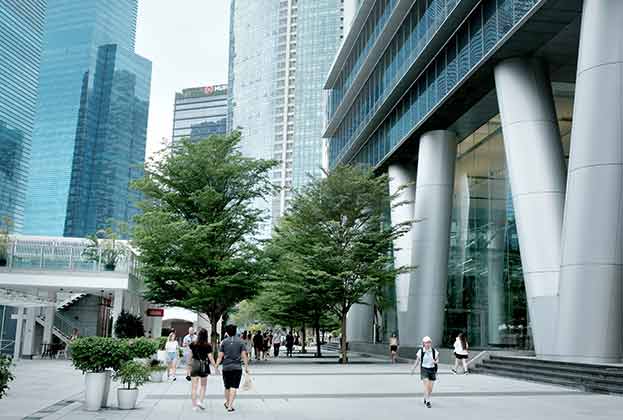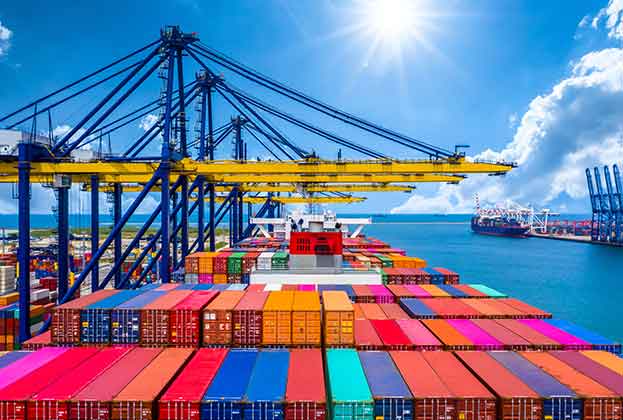We continue to expect activity to pick up in the second half of this year, but this may be conditional on further price corrections in the short term
Europe, Middle East, and Africa (EMEA)
Investment volumes fell by more than 75% in comparison to the same period a year ago, with the quarterly total of US$5.6 billion across the EMEA region representing the lowest since Q3 2016. Differing price expectations between buyers and sellers continue to inhibit transactions, especially in the core segment. The strong decline in turnover is also due to the fact that trading of large-volume properties and portfolios has declined.
The limited transactional evidence available paints a mixed picture on pricing developments in Q1. Prime yields moved out by 40 bps in both Île-de-France and Amsterdam to 4.4%, and by 30 bps in Madrid to 4.8%. Cologne held steady at a relatively tight 3.9% following 80 bps of outward movement over the course of last year.
Meanwhile, the benchmark yield on a prime asset in London actually came in by 25 bps to 4.75% in the quarter. More yield compression is expected to follow, with investors returning to the UK following a significant 35% price fall that was grounded more in panic than fundamentals.
In the rest of the region, we continue to expect activity to pick up in the second half of this year, but this may be conditional on further price corrections in the short term, as investors demand higher returns in the current capital market environment.
As a result, we believe that yields will see further softening over the next 12 months across core mainland European markets, as well as Dubai, despite the latter already providing very attractive returns relative to other markets. In the meantime, activity is driven by equity-rich buyers for smaller lot sizes. But specialised institutional investors remain committed to the sector, providing the price is right, as the UK experience shows.
While transaction volumes are sharply down in comparison with the same period last year, this represents a normalisation in activity following a two-year investment boom
Oliver Salmon, Global Capital Markets, World Research
Logistics take-up in the first quarter of the year in Europe and the UK was 39% below Q1 2021. However, this is broadly in line with the long-term average, and occupational metrics in some key markets point to a quick recovery; requirements in the UK were 74% ahead of Q4 in the first quarter, suggesting a take-up will rise during in second half of this year.
Meanwhile, vacancy rates in the region remain low, with the UK at 5.4%, Madrid at 5.7%, and Amsterdam at 6.3%. So with no signs of oversupply in the construction pipeline, vacancy should remain in check and support modest rental growth, particularly for larger assets with strong corporate occupiers, although incentives may increase and lease lengths can get shorter as a response to the normalisation of occupier activity.
North America
Transactional activity in the US experienced a significant slowdown in the first quarter of 2023, with investment volumes totalling US$18.5 billion. This represented a decline of 54% compared to the record high of over US$40 billion in Q1 2022. But wider context suggests this represented more of a normalisation in activity rather than an outright collapse; with volumes remaining comfortably above the longer-term average.
Yields in the sector are softening nevertheless, with an average prime logistics yield of 4.9% across the four markets monitored in this report. This reflects a 75 bps increase quarter-on-quarter, providing a more palatable risk premium of 140 bps to US Treasury yields, compared with the 25 bps from Q4. The high cost of debt is still putting pressure on cash-on-cash returns however, which averaged just 3.2% in Q1. This discrepancy between prime yields and the cost of debt is expected to support a further adjustment in pricing over the next 12 months to close this gap.
The fear of a recession has become more apparent, impacting occupier demand. Leasing velocity has slowed down relative to the exceptional levels witnessed in the past two years, returning to levels similar to 2018-2019, albeit when market conditions were still considered robust. Meanwhile, although construction starts have declined, there is still a significant amount of space due to complete in the next six to nine months, all with low pre-leasing rates. Vacancy rates are rising as a result, and rental growth has decelerated.
It is, however, important to emphasise that vacancy rates continue to be low by historical standards, averaging 4.4% across the four markets under consideration. Markets with strong fundamentals, like Los Angeles (3.2%) and New York (3.1%), remain particularly undersupplied. So although it is unreasonable to assume the double-digit rental growth of the recent past can be sustained, these markets should still experience positive rental growth due to a demand and supply balance that continues to favour landlords.

Asia Pacific
Investors in the logistics sector scaled back their ambition in Asia Pacific in the first quarter of the year. Acquisitions dropped by more than 60% on the year to US$4.8 billion. Two markets seeing the greatest pressure from rising interest rates, South Korea and Australia, experienced the steepest declines in investment volumes, falling by 67% and 74%, respectively.
The lack of liquidity in the former is driving a polarisation in investor preferences for the best locations. By contrast, Singapore, on the other hand, saw investment almost quadruple to over half a billion US dollars in the first quarter, supported by several notable transactions, including the city-state’s largest deal in four years.
With the exception of Singapore, where prime logistics yield is a healthy 7.0%, the average prime yield across the regional markets covered by this report was a much tighter 4.4% in Q1. Pricing corrections have not been as drastic as in Europe and the US, which could be a factor holding investors back, particularly in those markets where interest rates have risen the most.
Our outlook for prime yields over the next 12 months is that they will move out further, with the exception of Tokyo. The cost of debt is above 5% in all markets except Tokyo, peaking at 7% in the Seoul Metropolitan area. Cash-on-cash returns have been squeezed as a result, with a typical debt-financed transaction yielding a paltry 2.8% in Hong Kong and 3.2% in Seoul.
Investors can continue to leverage returns in Singapore and Tokyo; the former due to the high net initial yields on offer, and the latter owing to the Bank of Japan’s steadfast commitment to retaining an ultra-loose monetary policy. Tokyo also benefits from a typical LTV of 65%, which is also high when benchmarked across regional peers, meaning that investors can expect a healthy 7.8% cash-on-cash return on a prime logistics asset in Tokyo.
The strength of the occupational market varies across the region, depending on the local market dynamics. In Sydney, despite the current economic headwinds, occupiers are still competing hard for space, as there is virtually no availability (vacancy rate of less than 1%). Rents are being pushed above previous benchmarks as a consequence – with prime net face rents rising by 36.4% over the year in Q1, creating concerns around affordability for occupiers. In Tokyo, on the other hand, rents declined last year, due to ample new supply coming onto the market, which pushed up the vacancy rate. Excess supply is also a concern in Hong Kong and Seoul, with rents in the former expected to remain broadly stable this year as a result.
Read the articles within Taking Stock: Capital Markets Quarterly – Q1 2023 below.
.jpg)



